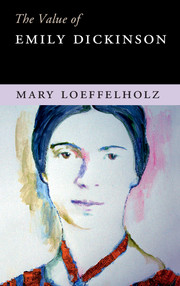6 - The Spirit lasts – but in what mode –
Published online by Cambridge University Press: 05 June 2016
Summary
Put it this way, as a thought experiment: If somehow all of Dickinson's manuscripts were lost along with all the copies of all the print editions and all the facsimiles, analogue and digital, of her writings – if Dickinson's poetry had to be reconstructed like Sappho's, from the memories of readers, from a smattering of fragments quoted by other writers, and from the assembled shards of Emily Dickinson coffee mugs occasionally unearthed from office middens – I suspect that an astonishing share of the corpus of her work could be accurately reassembled in stanza form, on its most basic metrical scaffolding of sound and sense.
Other aspects of Dickinson's writing that readers now value, however, including its embeddedness in personal correspondence and the visual appearance of her manuscripts, would be much harder to reconstruct. The affinity between particular poems and the wording of memorable letters; the poems that Dickinson chose to include in her first outreach to Thomas Wentworth Higginson; the high points of her long correspondence with Susan Gilbert Dickinson – readers would likely be able to converge on these. Reconstructing what was already a twentieth-century editorial reconstruction, experts might be able to reach a tolerable degree of consensus on the original relationship of the poems in at least some portions of some fascicles. In the effort to assemble and compare reliable texts of the poems, readers would contribute to recollecting Dickinson's most striking variant readings; it would be interesting to see how many such readings could be attested to by multiple readers. Readers who had spent time with Dickinson's manuscripts or their reproductions would retain, I think, at least general visual templates of early, middle, and late Dickinson: the careful cursive of the earliest fascicles, the wider spacing, cross-marked variants and unpredictable line breaks of the mid-1860s, the exploded fragments of the later years – and in the absence of the original manuscripts, memory would inevitably be biased toward the most extreme and distinctive characteristics of each phase of the life of Dickinson's writing. Memory of particular visual line breaks in particular poems in most cases would decay far more quickly.
- Type
- Chapter
- Information
- The Value of Emily Dickinson , pp. 118 - 134Publisher: Cambridge University PressPrint publication year: 2016

